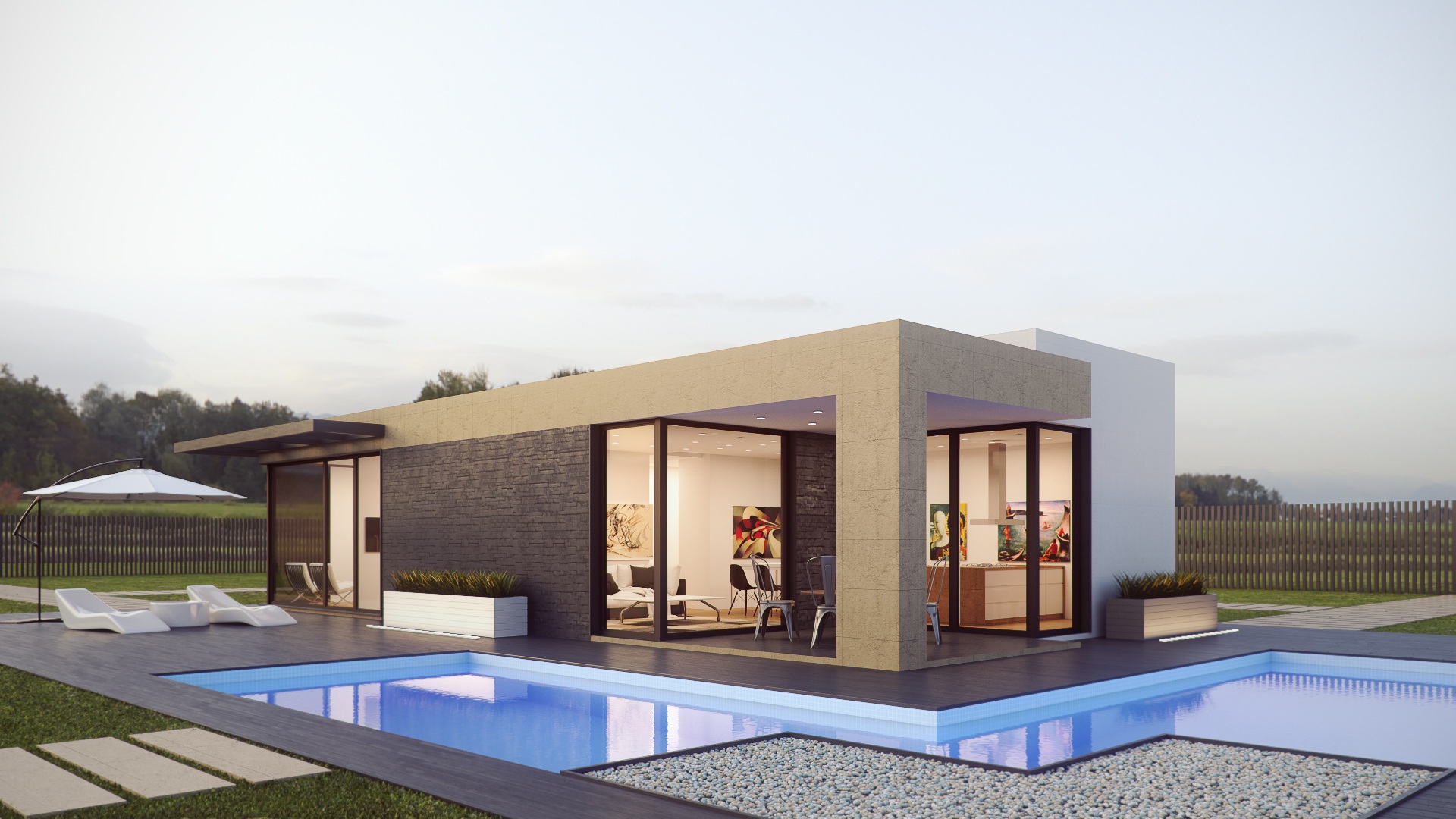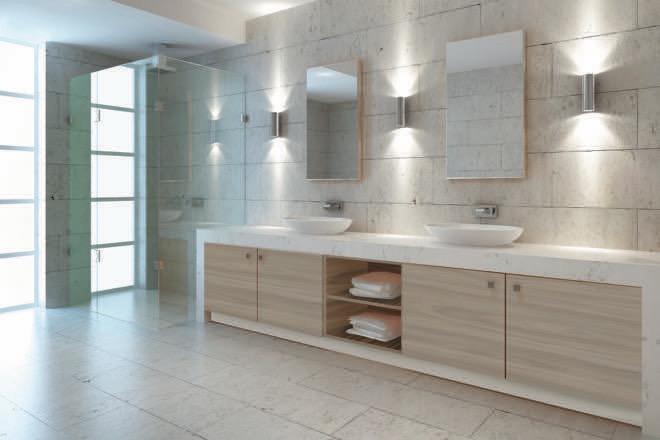Rather than demolish their red brick post-war house, these owners recognised its charm and character, and decided to not only add on but also complement it in a sophisticated fashion
As is the case with many homes of this style and era, the design of this red brick single-storey post-war house not only lacked imagination, but also had poor orientation and little connection to the backyard. But these homeowners saw beyond its flaws. “These clients decided to give their original brick home a new lease of life, without taking away the character they found attractive in the first place,” says architect Luke Stanley.
“They have a passion for design and furniture and felt that any new addition they were to introduce was to be of a contemporary nature, and clearly articulated with the original house. Hence the design inspiration came from the clients’ desire for a clearly contrasting addition and realising the original house was a perfect example of how most dwellings of that era paid little heed to the opportunities their topography presented.”
Their brief called for a contemporary north-facing addition of 73m2 to incorporate a new laundry, living room and master bedroom with ensuite, in order to provide additional space for their growing family and maximise connections to their under-utilised backyard.
The original portion of the 117m2 house was reconfigured to include a new bathroom and relocation of the existing kitchen (which had only recently been installed). An original storage shed, west-facing sunroom and internal walls were demolished, making way for the new bathroom and reconfigured kitchen.
The new timber-framed addition was built at the rear of the original house, with a glazed services area delineating new and old, and sits on a polished concrete slab, split over two levels.
Internally, the spaces are defined largely by the flooring. The walls and raking ceiling are finished in crisp white, while the polished concrete of the living area, the timber flooring of the bedrooms and the stone tiles of the ensuite define their respective functions within the house.
The highly insulated north-facing addition benefits from passive solar design principles, cross ventilation and double-glazed windows. A series of in-situ concrete blades on the northern elevation provide both shading and protection from summer sun, while allowing the exposed concrete floors to absorb winter solar gain.
The addition makes a strong connection with the fall of the site as a sleek black, timber-clad form that pushes westward up the slope to echo the original gradient. The change in level is navigated in two neat platforms that define their public and private function, while the roofline sails over in a strong singular pitch, unifying the areas underneath.
The clients chose the dark timber cladding and in-situ concrete to provide a clear contrast with the original red brick on the exterior. “They are familiar with high-end furniture design and were looking for a similar level of precision throughout the project,” says Luke. “With this in mind, extra attention was paid to the formwork and edges of the in-situ concrete blades, as we only had one shot at achieving a neat finish.”
Although on a limited budget, the clients chose to invest in key materials such as the hardwood timber cladding and precisely cast in-situ concrete blades. These concrete blades contrast with the black shell and frame openings to the north of the new addition, creating deep reveals that provide an element of shading and visual privacy to the bedroom at the western extremity.
This new bedroom opens both north and west to the upper lawn area of the split levels, while the lower living area opens directly to a generous spotted gum timber deck, which makes the most of its northern orientation.
The backyard was landscaped for the new deck and lawn area, with space along the southern side of the addition retained for a future garage or carport. A new spotted gum timber entry deck was also added to the front of the house.
The timber steps linking the internal floor levels continue through to the backyard, creating informal seating and a kids’ play area. Along with the in-situ concrete blades, they help to anchor the new addition within the site.
“By allowing the extension to engage with the site, the house feels anchored and solid, reversing the notion of a new timber addition being the lightweight sibling to the original brick house,” says Luke.
Project details:
Designed by: Cameron David Fry Architect
In collaboration with: Luke Stanley Architects
Built by: Oak Master Builders
Flooring
Kitchen/dining Original timber – Tasmanian oak tongue-and-groove flooring
Living/bedroom Concrete slab ground to expose aggregate with clear polyurethane sealant
Stairs Tasmanian oak tongue-and-groove flooring with clear polyurethane sealant
Walls
Kitchen/dining/living/bedroom Painted plasterboard – Dulux Natural White
Outdoor Horizontal shiplap profile spotted gum timber cladding with Cutek extreme oil exterior pigmented timber stain in black ash
Other In-situ concrete blades
Kitchen
Benchtop Reconstituted stone benchtop — Caesarstone
Splashback Colourback glass
Cabinetry and appliances Existing — reused
Bathroom fittings
Cabinetry Mirrored with Laminex Parchment finish
Basin Rogerseller wall mounted
Tiles/walls and floor Classic Ceramics 600x300mm vitrified wall tile
Sanitary fixtures and taps Rogerseller
Shower/bath Rogerseller shower on rail
Lighting
Lighting Partners Australia light fittings
Windows and External doors
Glass Clear double glazed
Frames Natural anodised aluminium frames — Capral 400 series
Outdoor
Roof Lysaght Custom Orb roof sheeting, flashings and cappings in Zincalume finish
Decking Spotted gum decking (untreated) to rear deck. Spotted gum decking with Cutek extreme oil exterior pigmented timber stain in black ash to front entry deck and steps
Landscaping By clients
Furniture Space Furniture selected by clients
Accessories Aluminium sun-shading angles fitted to top of in-situ concrete blades in natural anodised finish
Written by Danielle Townsend
Photography by Sonia Mangiapane
Originally from Home Renovation magazine Volume 10 Issue 2












